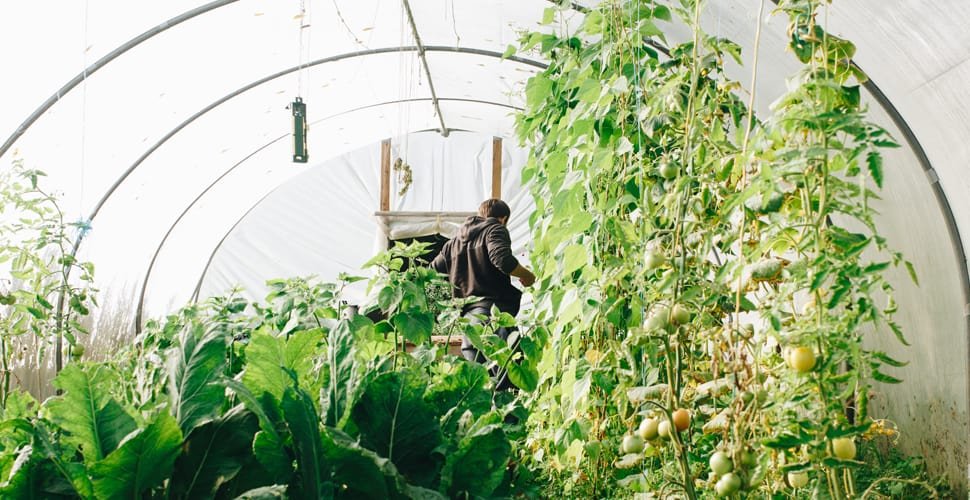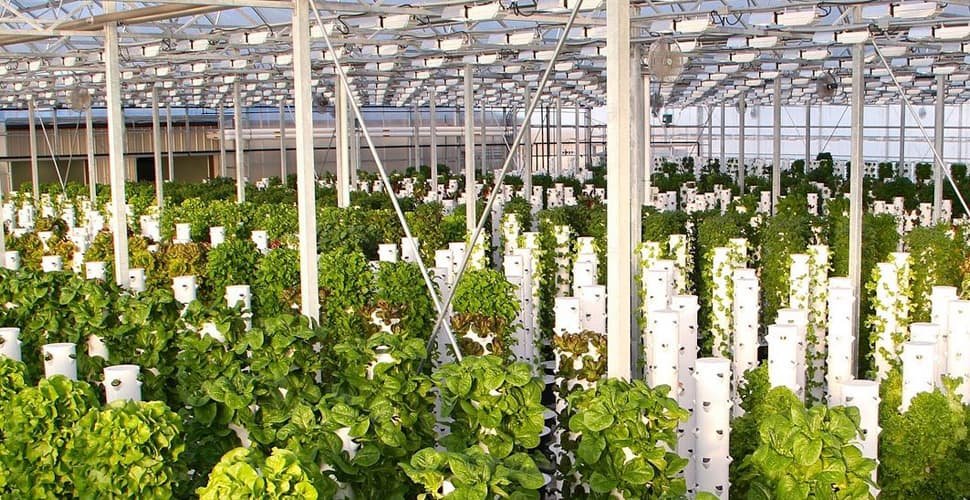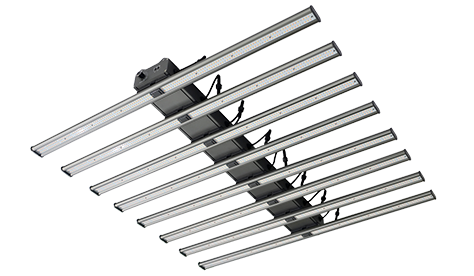Índice
Se você está prestes a investir no crescimento de estufa, já deve saber o valor da luz para suas colheitas. A vida vegetal forma um sistema complexo de processos biológicos em torno de sinais solares. Luminárias de Greenhouse fornecerá às plantas a luz necessária para as reações químicas necessárias para promover a fotossíntese, o crescimento e o desenvolvimento na ausência de luz solar.
Está se tornando cada vez mais importante para a saúde e o rendimento das culturas.
Se você decidir Faça uma mudança radical com um novo LED de estufa, cultive luz, fique com as luzes HPS comprovadas e faça algumas atualizações de eficiência na sua iluminação atual de culturas, leia-se.
Aqui, fornecemos um guia para luminárias de estufa que criam o melhor clima de estufa para suas colheitas.

Você precisa de luzes de cultivo em uma estufa?
Crescer em uma estufa protege as culturas da instabilidade climática. Ao mesmo tempo, protege -os de animais, pássaros e pragas que danificam as plantas jovens. Ainda outra desvantagem, as plantas dificilmente são expostas à luz direta.
Existem muitos tipos diferentes de estufas no mercado hoje. Eles podem ser feitos de plástico, vidro ou policarbonato, tudo em uma estrutura que consiste em paredes transparentes e um teto. Suas características de construção permitem que a luz solar penetre na sala, mas o acesso gratuito à luz natural de contato não direto. Os agricultores que cultivam culturas com pouca luz desejam confiar na luz natural e não consideram colocar luz artificial em estufa.
Se você tem um plano de cultivo de inverno, precisa de um sistema de iluminação de estufa. Projetado para atender às necessidades espectrais das plantas em todas as etapas do crescimento, é a escolha mais eficiente para os produtores de estufa. Esteja você começando mudas ou procurando cultivar frutas e vegetais durante o inverno, é um acessório obrigatório.
Sumário breve
- Quando as condições climáticas são desafiadoras, as luzes das plantas podem regular o clima para promover o crescimento mais saudável das plantas.
- As luzes de cultivo de plantas podem ser usadas no inverno, quando o sol se põe mais cedo para estender as horas de luz para mudas.
- Você também pode definir a luz para acender após o pôr do sol se as plantas não estão obtendo a luz de que precisam diariamente.

As plantas com pouca luz precisam apenas da luz solar parcial, mesmo que sua estufa não esteja recebendo luz solar suficiente. Por outro lado, se suas plantas forem amantes da luz e precisarem de exposição ao sol, use a iluminação suplementar de estufa.
Esta é uma escolha apropriada para iniciantes e novatos, além de jardineiros ávidos. Os produtores podem cultivar plantas para diferentes estações e se beneficiar mais.
Entendendo as luminárias de estufa
Depois de entendermos as razões para usar luminárias de estufa em estufas, vamos mergulhar em sua aplicação.
Forneça luz suplementar
Não obter luz suficiente é um problema nas estufas durante o inverno. Quando as plantas não têm luz suficiente, elas se estendem para absorver a fonte de luz mais próxima para produzir açúcares vegetais vitais. Esse comportamento pode levar a plantas mais pesadas, excessivamente altas e esbeltas. Para evitar desviar a energia de folhas e flores para caules, um sistema de iluminação de estufa pode melhorar esta situação por fornecendo luz suficiente para ajudar as plantas a florescer.
Fornecendo muita luz
Durante o dia, as plantas absorvem luz e água para produzir amido e oxigênio. À noite, as plantas convertem amido em açúcar e o armazenam. As luminárias de estufa podem funcionar por muito tempo também arriscando danos à saúde das plantas. Para evitar isso, desligue -os e dê às plantas cerca de 8 horas de escuridão livre depois de reabastecer a luz necessária.
Layout adequado das lâmpadas
É necessário que os produtores planejem o layout de suas lâmpadas, com base no tipo de planta, tamanho da estufa e espaçamento das plantas. Alguns produtores distribuem as lâmpadas desigualmente, fazendo com que algumas plantas cresçam bem, enquanto outros ficam para trás.
Enquanto plantas diferentes podem ter outros requisitos de luz, em geral, a estufa comercial As luzes de cultivo devem emitir de 20 a 40 watts de luz por pé quadrado. A luz também deve atingir todas as folhas de cada planta, certificando -se de não espaçar as plantas muito próximas ou as folhas bloquearão a luz de outras plantas.
Solução de luminárias de estufa
Complementar. Para promover a fotossíntese, a luz artificial em estufa é usada em combinação com a luz solar natural.
Periódico. A iluminação suplementar é usada apenas para possibilitar o controle da duração da luz do dia.
Alternativa de luz do dia. Esta opção permite o controle máximo do processo de crescimento da planta. Vale ressaltar que a substituição de luz do dia é usada apenas em salas com um ambiente controlado pelo clima.
Sumário breve
- Se a luz natural não for suficiente, instale a iluminação suplementar de estufa.
- As estufas geralmente requerem 6 horas de luz direta por dia.
- Coloque suas luzes e use uma solução de iluminação razoável para tirar o máximo proveito delas.
- As plantas devem ter um amplo tempo de crescimento escuro livre.

Qual é a melhor iluminação para uma estufa?
Para encontrar as melhores luzes de cultivo para a estufa, os produtores de estufa devem considerar três fatores: o tipo de planta, a época do ano e a quantidade de luz solar disponível naturalmente.
Os produtores têm uma variedade de opções. Para aqueles que não estão familiarizados com a terminologia ou novos em crescimento, é fundamental entender todos os diferentes estilos de iluminação. Vamos dar uma olhada em seus usos e vantagens.
Hight Pressure Sodium Grow Light (HPS cresce luz)

O lâmpada de estufa de sódio de alta pressão Emite mais luz de espectro âmbar-laranja e vermelha. A luz intensa e brilhante tem um impacto positivo na promoção da germinação e floração das plantas. Funciona melhor quando usado no final do ciclo de crescimento da planta. É aproximadamente sete vezes mais eficiente que a luz incandescente e funciona bem quando usado à luz do dia natural.
Lembre -se de pré -aquecer as lâmpadas HPs por 4 a 5 minutos e esfrie -as por 1 minuto. Eles não são adequados para estufas, onde as luzes estão ligadas e desligadas com frequência. Também é importante observar que as lâmpadas HPS devem ser instaladas de 30 a 36 polegadas acima das plantas para obter melhores resultados.
- Fornece um bom espectro de luz comprovado como adequado para plantas.
- As lâmpadas HPS não são adequadas para estufas, onde as luzes são frequentemente ligadas e desligadas.
- Uma alternativa mais barata do que outras opções no mercado.
- Fornece calor extra, o que é benéfico no inverno.
- Seu tamanho é menor que as lâmpadas leves ou fluorescentes.
- Energy-Eficiente e de baixo custo.
Luzes de cultivo de estufa LED

LEDs não são mais novos, eles são a escolha mais duradoura e ideal. Eles são mais eficiente do que outras luzes da planta Porque mais da entrada de energia vai à luz em vez de calor.
Os 7 principais benefícios da iluminação suplementar de estufa LED são os seguintes.
- Os equipamentos podem ser colocados perto das plantas para aumentar a eficiência e acelerar o ciclo da colheita da planta.
- Estender o horário de luz do dia sem perder o nascer e os efeitos do pôr do sol.
- Os LEDs consomem 30% menos energia que as luzes fluorescentes, reduzindo o uso geral de energia em até 75%.
- Controle de espectro variável com ajuste de luz flexível para fornecer luz ideal para plantas
- Os LEDs duram mais tempo que as lâmpadas tradicionais e são menos caras de manter.
- Desfrute de qualidade consistente de qualidade o ano todo.
- Os acessórios de iluminação de estufa projetados especificamente são normalmente à prova d'água IP65.
Metal Halide Grow Light (Mh Cresça Luz)

As lâmpadas de halogeneto de metal são usadas porque emitem luz azul, mas parecem brancas brilhantes aos nossos olhos humanos. Tradicionalmente, os produtores internos usam luzes de halogeneto de metal durante a fase nutriente do crescimento das plantas. É ideal para os estágios de floração e produção de frutas, porque eles imitam a luz solar sazonal da primavera e do início do verão.
Como nas lâmpadas HPS, é necessária pré -aquecimento. As lâmpadas de halogeneto de metal precisam se aquecer por 5 minutos e, em seguida, esfrie por 5 a 10 minutos antes que possam ser reiniciadas. Lâmpadas de halogeneto de metal cerâmica, como HPs, precisam ser penduradas 30 a 36 polegadas acima das plantas para obter o efeito desejado.
- A vida útil média de 8.000 a 15.000 horas.
- As lâmpadas MH são 3 a 5 vezes mais eficientes que as lâmpadas incandescentes.
- Precisa girar as lâmpadas para o crescimento uniforme da planta.
- As lâmpadas MH não são adequadas para estufas, onde as luzes são frequentemente desligadas e acesas.
Tubos fluorescentes T5

T5 é ideal para o crescimento de estufas, hidroponia, armazéns e celeiros. E é perfeito para o estágio de mudas das plantas para garantir um crescimento uniforme.
A forma do tubo da lâmpada é denotada como “T” e o número 5 indica seu diâmetro. Essas lâmpadas são finas, apenas 5/8″ em diâmetro, o que torna esses tubos fluorescentes mais eficientes e populares que as lâmpadas fluorescentes padrão.
- A lâmpada T5 usa menos energia e pode durar até 50.000 horas.
- Possui uma saída de lúmen muito alta com saída de calor extremamente baixa.
- Está equipado com um refletor de alumínio para obter a máxima eficiência.
- O T5 não possui muita distribuição de luz e não é adequado para áreas maiores.
- As lâmpadas fluorescentes não podem penetrar profundamente no dossel da planta para estimular as plantas de floração e frutificação.
Requisitos de iluminação de estufa
As estufas precisam de pelo menos 6 horas de luz solar direta por dia. Para aproveitar ao máximo a luz do sol em sua estufa de leste a oeste, mantenha as janelas limpas e remova a poeira regularmente, a estufa pode aumentar a intensidade da luz em 10%.
Em vez de falar sobre os requisitos de iluminação de estufa, é importante entender as necessidades diárias de luz de suas plantas. As plantas são fotoperiódicas. Ou seja, eles precisam de uma certa luz solar desde o momento em que vegeta até o estágio de floração ou frutificação. As plantas longas da luz do dia precisam de mais de 12 horas para florescer, as plantas curtas da luz do dia exigem uma pequena quantidade de luz do dia, e algumas plantas são neutras para a luz do dia.

Coisas para lembrar para qualquer configuração de iluminação
Escolha o espectro certo
Todas as plantas precisam de luz par (radiação fotossinteticamente ativa) na faixa de comprimento de onda de 400 a 700 nm.
Verifique os requisitos do nível da luz
Os níveis de luz suplementares precisam ser apenas uma fração do nível total da luz, e os níveis de luz fotoperíódica podem ser ainda mais baixos. Você precisa de ferramentas que possam medir com precisão o nível de luz natural em sua estufa, bem como o nível de luz produzido pela iluminação suplementar.
Verifique as áreas sombreadas dos acessórios
A iluminação suplementar de estufa LED lança uma sombra. Você precisa garantir que as áreas críticas não estejam bloqueando a luz natural. Este é um tópico que vale a pena discutir com seu designer de iluminação ao planejar seu layout.
Eficiência da luminária
Os custos de energia são a segunda maior despesa em uma estufa, e a iluminação das culturas pode assumir uma grande parte dos custos operacionais gerais. Você precisará pesar o investimento inicial inicial contra o retorno potencial.
Requisitos de energia
Se a sua estufa possui a configuração elétrica necessária para alimentar as luminárias de estufa, sua fiação, caixa de disjuntores e amplificadores de serviço são fatores que devem ser considerados.
Resumindo
As luminárias de estufa são importantes para ajudar as plantas a prosperar na estufa. Existem muitas opções disponíveis para atender às necessidades de diferentes tipos de plantas e estágios de crescimento.
É por isso que, como jardineiro, você precisa fazer algumas pesquisas sobre o custo inicial da criação de luzes, os tipos de plantas que você possui, suas necessidades e o tamanho da sua estufa. Você deve Escolha a luz certa da planta para o seu desenvolvimento de negócios com base em seu real para necessidades concretas reais.
Jayes
Como gerente de marketing digital da AUXGROW, Jayes combina paixão por sistemas hidropônicos e experiência em luzes LED de cultivo. Com experiência prática e profundo conhecimento, Jayes guia você pelo mundo do cultivo sustentável.





